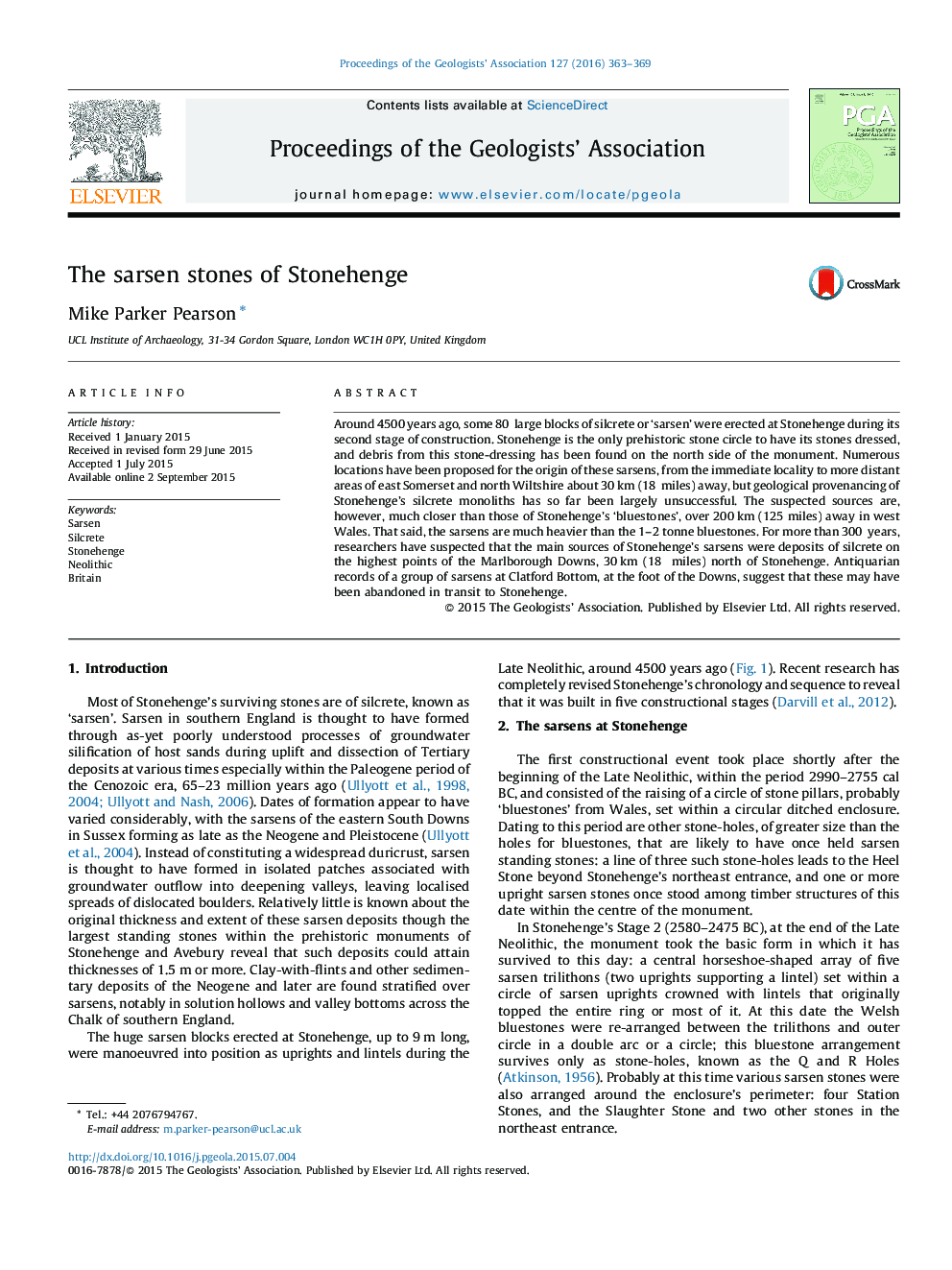| Article ID | Journal | Published Year | Pages | File Type |
|---|---|---|---|---|
| 4734584 | Proceedings of the Geologists' Association | 2016 | 7 Pages |
Around 4500 years ago, some 80 large blocks of silcrete or ‘sarsen’ were erected at Stonehenge during its second stage of construction. Stonehenge is the only prehistoric stone circle to have its stones dressed, and debris from this stone-dressing has been found on the north side of the monument. Numerous locations have been proposed for the origin of these sarsens, from the immediate locality to more distant areas of east Somerset and north Wiltshire about 30 km (18 miles) away, but geological provenancing of Stonehenge's silcrete monoliths has so far been largely unsuccessful. The suspected sources are, however, much closer than those of Stonehenge's ‘bluestones’, over 200 km (125 miles) away in west Wales. That said, the sarsens are much heavier than the 1–2 tonne bluestones. For more than 300 years, researchers have suspected that the main sources of Stonehenge's sarsens were deposits of silcrete on the highest points of the Marlborough Downs, 30 km (18 miles) north of Stonehenge. Antiquarian records of a group of sarsens at Clatford Bottom, at the foot of the Downs, suggest that these may have been abandoned in transit to Stonehenge.
